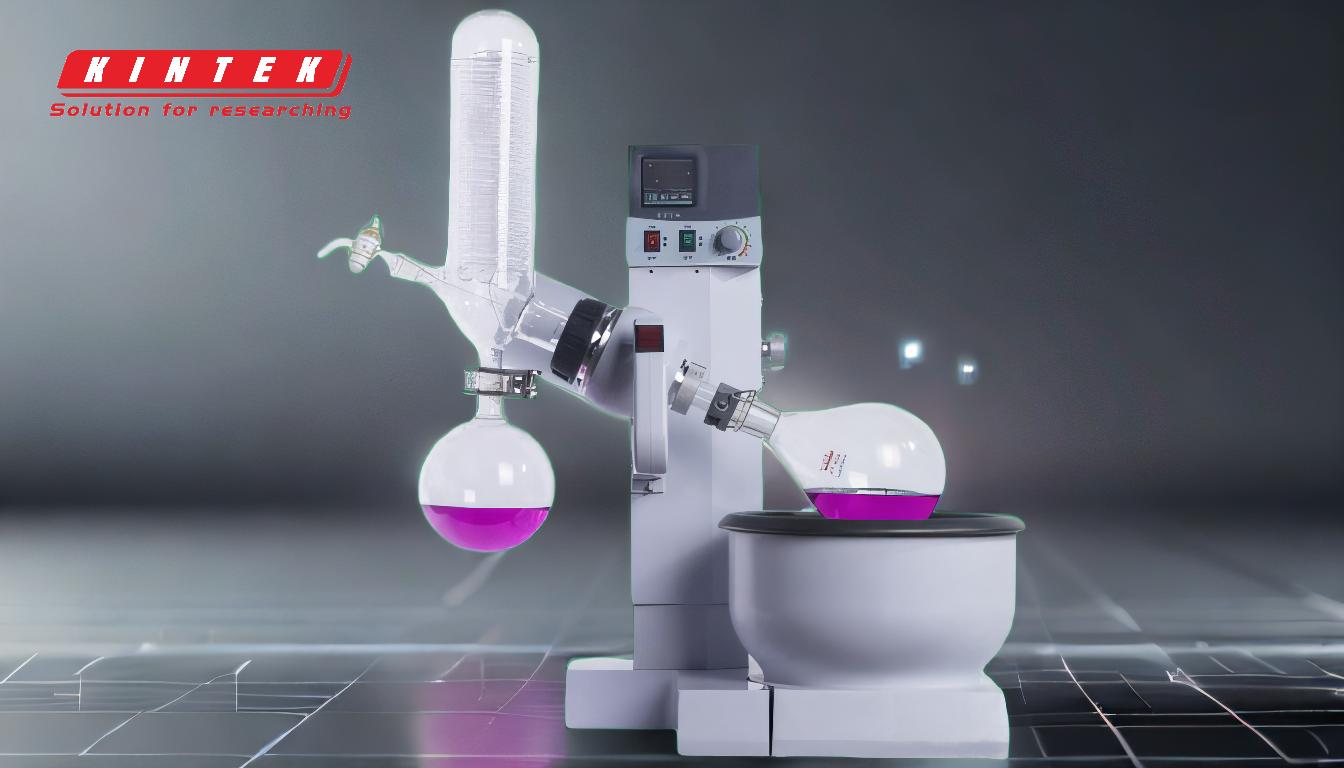A rotary evaporator, often referred to as a rotavap or rotovap, is a specialized piece of equipment widely used in chemical laboratories for the efficient and gentle removal of solvents from samples through evaporation. It is particularly valued in organic chemistry for concentrating samples by evaporating solvents under controlled conditions. The device operates by reducing the pressure to lower the solvent's boiling point, rotating the sample to increase the effective surface area, and applying heat to the solution. This combination of features makes it faster and more efficient than traditional evaporation methods, especially for solvents with relatively low boiling points. Rotary evaporators are commonly used for tasks such as solvent removal, sample concentration, and even in molecular cooking for preparing extracts and distillates.
Key Points Explained:

-
Definition and Purpose:
- A rotary evaporator is a device used in chemical laboratories to remove solvents from samples through evaporation. It is particularly useful in organic chemistry for concentrating samples by evaporating solvents under controlled conditions.
- The primary purpose of a rotary evaporator is to efficiently and gently separate solvents from mixtures, making it an essential tool in many laboratory settings.
-
How It Works:
- Pressure Reduction: The rotary evaporator reduces the pressure inside the system, which lowers the boiling point of the solvent. This allows for evaporation at lower temperatures, which is crucial for heat-sensitive compounds.
- Rotation: The sample is placed in a rotating flask, which increases the effective surface area of the liquid. This rotation helps in faster and more uniform evaporation.
- Heating: The solution is gently heated, which aids in the evaporation process. The combination of reduced pressure, rotation, and heating makes the rotary evaporator highly efficient.
-
Applications:
- Solvent Removal: Rotary evaporators are commonly used to remove solvents with relatively low boiling points, such as ethyl acetate (EtOAc) and n-hexane, from samples.
- Sample Concentration: They are widely used in organic laboratories to concentrate samples by evaporating solvents under controlled conditions.
- Molecular Cooking: In addition to laboratory use, rotary evaporators are also employed in molecular cooking to prepare extracts and distillates.
-
Advantages:
- Efficiency: Rotary evaporators are more efficient than evaporation under atmospheric pressure, making them faster for solvent removal.
- Gentle Evaporation: The controlled conditions (reduced pressure and gentle heating) make it suitable for heat-sensitive compounds.
- Versatility: They can be used for a wide range of solvents, although solvents with high boiling points like water or dimethylformamide (DMF) may require additional measures such as a vacuum system capable of achieving sufficiently low pressure or the use of drying agents like magnesium sulphate (MgSO4).
-
Limitations:
- High Boiling Point Solvents: While rotary evaporators are excellent for low boiling point solvents, they are less effective for solvents with high boiling points like water or DMF. These solvents may require a more robust vacuum system or pre-treatment with drying agents.
- Complexity: Although generally simple to use, the need for precise control of pressure, temperature, and rotation speed can make the operation somewhat complex, especially for beginners.
-
Common Solvents Used:
- Low Boiling Point Solvents: Solvents like ethyl acetate (EtOAc) and n-hexane are commonly removed using rotary evaporators due to their relatively low boiling points.
- High Boiling Point Solvents: Solvents with high boiling points, such as water or dimethylformamide (DMF), often require additional steps or equipment for effective removal.
In summary, a rotary evaporator is a versatile and efficient tool in chemical laboratories, particularly for the removal of low boiling point solvents and the concentration of samples. Its ability to operate under reduced pressure and controlled heating conditions makes it invaluable for handling heat-sensitive compounds and achieving rapid solvent evaporation.
Summary Table:
| Aspect | Details |
|---|---|
| Purpose | Efficiently remove solvents and concentrate samples under controlled conditions. |
| How It Works | Reduces pressure, rotates sample, and applies gentle heat for evaporation. |
| Applications | Solvent removal, sample concentration, molecular cooking. |
| Advantages | High efficiency, gentle evaporation, versatile for low boiling point solvents. |
| Limitations | Less effective for high boiling point solvents; requires precise operation. |
| Common Solvents | Ethyl acetate, n-hexane (low boiling); water, DMF (high boiling). |
Ready to enhance your lab's efficiency with a rotary evaporator? Contact us today for expert advice!












